10 Incredible Songs in 5/4 and 5/8 Time

This article will share ten incredible songs in 5 4 and 5 8 timing. We’ll choose a mix of jazz, classical, folk, and straight-up rock so you can get a better understanding of this unusual time signature.
What do the Mission Impossible theme song, Radiohead’s Morning Bell, and the Dave Brubeck jazz classic Take Five have in common? It might not seem obvious, but they’re all played in 5/4 time signatures.
The 5/4 time signature has an unusual feel. It works by using five quarter notes in a space where four would exist in conventional 4/4 timing. While this makes it rather challenging to dance to most music written in 5/4 timing, you can find yourself tapping along to it when done right.
For anyone trying to learn guitar, thinking about unusual time signatures is a great way to expand your horizons and understand the complexity of the music. However, without the basics, none of that learning is possible.
Elevate by ICMP offers guitar courses for beginner and intermediate players trying to improve their playing. Our expert-led classes can help you learn various styles, like blues and rock.
Click here to explore the different options on offer, whether you want to build the proper foundation or take your playing to the next level. With a mix of guitar techniques, music theory, performance, and production, our well-planned courses will allow you to grow your confidence as a player.
Learning music is a constant process. No matter your level, there is always more practice to do or things to know. So let’s get into our ten incredible songs in 5/4 or 5/8 to see what we can learn.
What is a time signature?
A time signature is a way to talk about the rhythm of a piece of music. The time signature or meter refers to the rhythmic components of a song. In essence, it tells you how many beats are within a song and which note value is considered a beat.
The first thing you’ll notice about the 5/4 time signature when you see it written in classical notation is that the notes are placed in top and bottom order.
To explain more about time signatures, let’s explore the significance of the top and bottom numbers.
What does the top number mean?
The top number of the time signature notes the number of beats within a phrase or cycle. So, in the 4/4 time signature, there are four quarter notes. In 5/4, there are five quarter notes.
What does the bottom number mean?
The bottom number refers to the type of notes. You’ll probably have seen 1/4 or 1/8 to describe different types of notes. In these examples, 1/4 is a quarter note; while 1/8th is referred to as an eighth note.
As mentioned above, in the 4/4 time signature, there are four quarter notes. In 5/4, there are five quarter notes.
Common time signature
4/4, also known as common time, is the time signature you’ll hear in most famous songs. It follows that 1, 2, 3, 4 pattern that you hear across pop, disco, EDM, and other types of commercial music. It consists of four beats of four quarter notes.
What time signature is a waltz?
The 3/4 time signature is generally associated with the waltz. It uses three measures of quarter notes to achieve the distinctive waltz feel.
How does the 5/4 time signature work?
To explain a 5/4 time signature, we need to think about these top and bottom notes. The 5 refers to five quarter notes played in each musical bar. So, as each bar or cycle of the music goes around, there are five quarter notes on top.
Or, to put it another way, the 5/4 time signature uses five quarter notes in one measure. While it’s primarily composers or people reading sheet music who think about music in this way, as you read this article, you’ll realise that many of your heroes have an appreciation for the weird and wonderful time signature of 5/4.
Quintuple meter
5/4 and 5/8 are the two most common time signatures of the quintuple measure. Some quintuple meter is played as (2/4 + 3/4) or (3/4 +2/4). In these scenarios, the 2 is a duple meter, with the 3 as a triplet meter.
Tap these rhythms out by hand, and you’ll notice that there is a distinct Afro-Latino feel to the music.
What are the benefits of learning about odd time signatures?
The main reason composers use odd time signatures is that they create a different feel. Odd time signatures provide a useful avenue if you want to inject your music with a particular theme.
No matter if you’re a songwriter, a drummer, or a guitar player, studying unusual time signatures can help you:
- Understand music better
- Play better
- Experiment
What popular songs are in 5/4 time?
While you sat through all that theory, you might have been thinking to yourself, “ok, fine, but What music was written in 5/4 time?” There is a surprising number of popular songs that use unusual time signatures.
The song Closure from Swift’s studio album evermore, released in late 2020, was written in 5/4.
Additionally, this usual time signature also appears in the song Everything’s Alright from the Andrew Lloyd Webber musical Jesus Christ Superstar.
Keep reading if you want to find out more songs written in 5/4.
#1. Mission: Impossible theme song – Lalo Schifrin
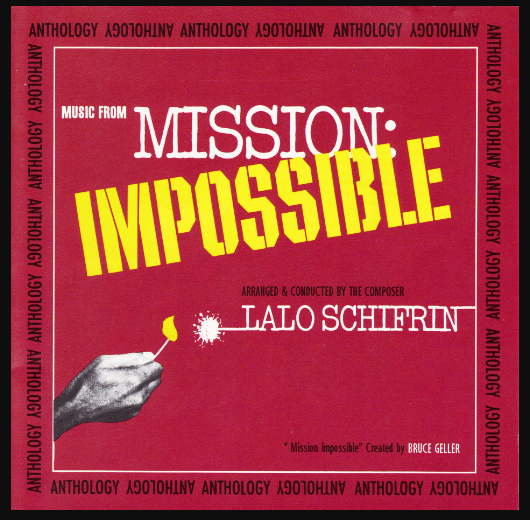
If there is one song in 5/4 that everyone knows, it’s got to be the Mission: Impossible theme song. It’s a great song to listen to if you’re trying to get your head around 5/4 time signature. Put it on and count along with five beats for each cycle, and you’ll soon get the swing of things.
The Mission impossible main theme song was originally written by the Argentine composer Lalo Schifrin, which goes some way to explaining the track use of this Latin music groove. Schifrin won five Grammys throughout his career and was known for incorporating elements of jazz and Latin American music into his work.
As a composer, some of Schifrin’s most famous soundtracks include Enter the Dragon and the Dirty Harry soundtrack, which features gritty blues guitar riffs that really capture the spirit of the times.
The Mission: Impossible song still sounds epic today. It’s a versatile piece of music that works across various genres. Check it out being played by this wedding string quartet.
Listen closely to the theme, and you can hear that the last two beats are emphasised. As such, it can be considered a 3+2 pattern — or, as we said earlier, a combination of a triplet and a duplet.
Interestingly, Schifrin stated that Morse Code was his inspiration for the song. “_ _ ..” is the Morse Code for MI. If we take each dash as a beat and a half and dot as a beat, they add up to 5 measures in total.
The song is also known as Burning Fuse. This name stems from Schifirin’s confusion about Mission: Impossible after agreeing to take on the job of making the soundtrack. The Argentine composer couldn’t understand the story well when he arrived on set to meet the producers. So, by way of inspiration, the producer Bruce Geller told him the story was likely to begin with a match lighting a fuse.
Schifrin tried one take, which producer Bruce Geller didn’t like. However, once Schifirin had seen the rough edit of the TV pilot, he understood what needed to be done and produced the track we all know and love today.
Geller loved the new take. With its jarring brass and woodwind stabs, the off-kilter feel is perfect for a spy thriller like Mission: Impossible because it captures a sense of a difficult pursuit.
Of course, the track has been updated for the Tom Cruise film versions of the classic show. One notable example is when Adam Clayton and Larry Mullen from U2 re-recorded Theme From Mission: Impossible in 1996. This modern interpretation keeps the original 5/4 groove, with the latter part of the song giving a gritty, industrial feel.
While the film versions of Mission: Impossible feature new artists and composers taking on the original theme, none of them capture the majesty of Schifirin’s original score.
#2. River Man – Nick Drake
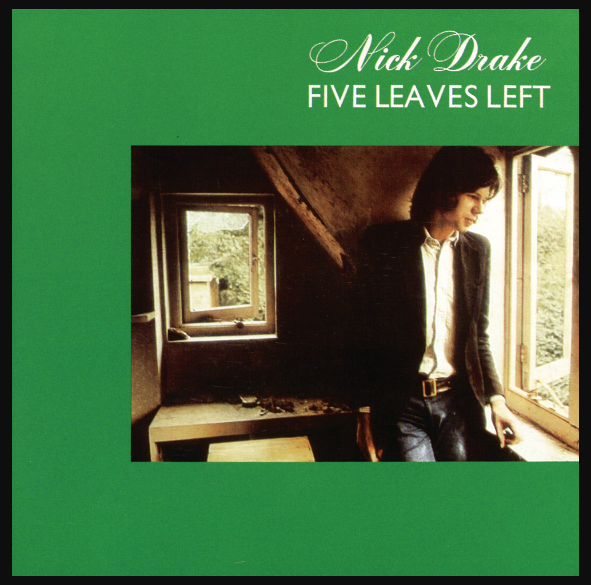
Five Leaves Left was released in 1969. It’s probably Nick Drake’s best album, behind the 1972 classic Pink Moon. River Man is the second track from Five Leaves Left, and it’s notable for its unusual measure.
He might be the second most famous musical Drake these days, but Nick had his time, but sadly, it wasn’t until years after his death from an overdose. His music received relatively little attention while he was alive, and it wasn’t until the 80s and onward that he became popular.
Nick Drake was a self-taught genius. He was a highly technical player with a penchant for alternative tunings and unusual chord voicings. However, River Man — and its 5/4 time signatures — is what we’re here to concentrate on.
Listen to River Man, and it’s obvious from the opening bars that something is up. It’s an excellent example of the strange and troubling feeling of 5/4. It feels highly unstable and otherworldly, with the addition of 4th and 9th chords lending a complementary jazzy feel.
While the song is primarily in 5/4, some sections shift to 4/4. As a testament to the complex nature of the track, Drake’s friend and composer, Robert Kirby, found the arrangement too challenging to work with. Kirby, who provided arrangements for the rest of Five Leaves, couldn’t figure out how to write for this unusual rhythm.
Instead, leading Scottish composer Harry Robinson filled in on the session and nailed it.
Listen to the song now, and you can pick out the feeling of flowing down a river. The lyrics are dark and foreboding, and the usual guitar line suits them perfectly. The song has a unique, dreamlike feeling that Nick Drake could not have achieved without the 5/4 meter.
#3. Morning Bell – Radiohead

While they may have started out as a fairly straightforward “Indie Pop” band, by their third album, OK Computer, Radiohead had veered into using an odd meter on some of their tracks.
Morning Bell is a song from their highly experimental album Kid A.
If you’re struggling to get a handle on 5/4, listen to a few bars of this track. Then, turn it off, and tap out the rhythm. The sliding rhythm guitar tone alternates between two notes, each containing five beats. Because of this, there is an argument to be made that the song is actually in 10/8.
The track starts off quite simply. However, in characteristic Radiohead style, it becomes more complex as each member adds new parts. In the centre of the song, a mournful electric piano accompanies the 5/4 beat before things get more complicated.
Thom Yorke’s vocals enter, low in the mix, with squelching, squealing guitars seeing the song out.
While some elements of Morning Bell sound fairly direct, the song has an avant-garde feel that is typical of Kid A.
Finally, it’s worth noting that there is a 4/4 version of Morning Bell on the album Amnesiac. It’s called Morning Bell/Amnesiac, appropriately enough. The Amnesiac version uses a slower pace and accompanying musical elements to capture a much sadder and discordant feel. It sounds like carnival music that has become very sickly.
However, it does show how the same piece of music can be interpreted in 5/4 or 4/4 and have an entirely different feeling and rhythm.
The Kid A version definitely benefits from the 5/4 meter. It allows the bank to eek something more dark and tense from the track. The sharp drums and strong bassline do a lot to capture this feeling.
While the song doesn’t fully represent the band’s overall style, it sits perfectly on Kid A.
Are there other Radiohead songs in 5/4 time signature?
Yes. In fact, a lot of Radiohead’s post-Bends era uses unusual time signatures. The wild opening track of 2007’s In Rainbows, 15 Step, uses 5/4, while you can find the same meter in These Are My Twisted words.
15 Step is another great one to count along to while you absorb the feel of 5/4. The playing on this record is immense. Colin Selway’s popping, crackly drums before Greenwood slides in around 0:41 with an elegant riff are one of the album’s best moments.
#4. Take 5 – Dave Brubeck
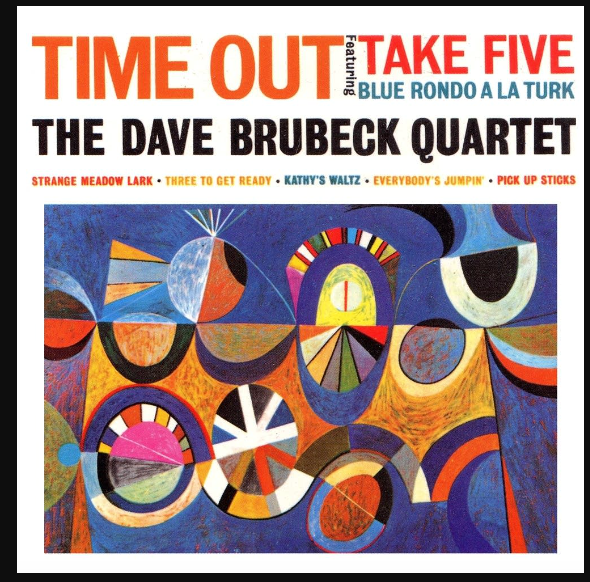
It’s impossible to talk about 5/4 time signatures without thinking about Dave Brubeck’s Take 5. It’s easily one of the most famous songs in 5/4.
What’s remarkable about Take 5 is that it feels so loose and natural that many people don’t even notice it’s in an unusual time signature.
The other notable aspect of the track is that it’s really catchy. Hear the melody once, and you’ll probably be whistling it all day. A large part of this is in how the 5 notes are accented.
For anyone who doesn’t know, accents are when a beat is given particular emphasis. Take Five accents the one and the four, leaving the two, three, and five some space. As such, you can see it as a combination between a waltz and a two-step, both popular styles of the 1950s and 60s music.
With Take 5, Brubeck took a fairly standard blue progression and gave it new life by adding one beat to the cycle.
As you can see, the name Take Five probably didn’t relate to taking a five-minute break. No, this 5 was five quarter notes.
Released in 1959, Take Five became the best-selling jazz record of all time, which is remarkable considering the 5/4. Early recordings of the song are also available, which show that the band struggled with the rhythm.
On the most commonly known recording of the song, drummer Joe Morello’s beat has a very relaxed swing. However, the earlier version is faster and more rigid. Both Morello’s beat and saxophonist and composer of Take Five, Paul Desmond, struggled with their now iconic parts.
However, they didn’t struggle for long, and soon enough, a jazz-blues classic was born.
Blues Rhythm Guitar course
Dave Brubeck’s Cool Jazz style took inspiration from classical music and the blues. Our Blues Rhythm Guitar course offers a great introduction to a similar jazz blues sound.
Rhythm guitar is an essential part of blues music. Our on-demand course will teach you about blues bars and chords as you learn to play various styles.
With six different modules, each dealing with a distinct aspect of the blues, such as riffs, turnarounds, or advanced chords and substitutions, you can move from being an absolute beginner to jamming with a band at your own pace.
Click here to learn more about our cost-effective and immersive course.
#5. Hanging Tree – By Queens of the Stone Age
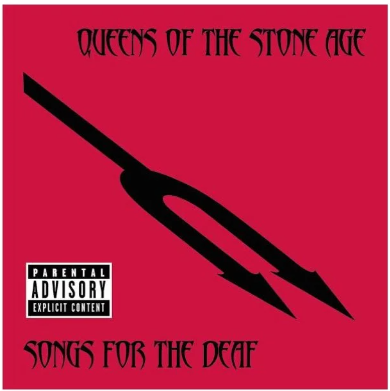
Songs for the Deaf (2002) is Queens of the Stone Ages’ biggest album. It’s the band’s third full studio release. Additionally, it features a guest spot from ex-Nirvana and Foo Fighters frontman Dave Grohl and sold almost 2.5 million copies.
Widely considered one of the best rock albums of the era, Songs for the Deaf includes some classic tracks that still sound fresh and energetic today, such as No One Knows, A Song for the Dead, and Millionaire.
Hanging Tree is one of the more unusual songs from the album. While perhaps not a fan favourite, Hanging Tree uses a 5/4 meter to capture an uneasy, jerky rhythm.
During the Hanging Tree guitar solo, the snare drum switches to 4/4. Again, there is an argument to be made that the time signature is more accurately a 10/8. However, that would require the 10 to be divided irregularly. In short, it flows much better than 5/4.
Some notable elements of the song are the late Mark Lanagan’s extraordinary vocals and the song’s wild, screeching guitar solo at the end.
Interestingly, Chilean-American multi-instrumentalist Alain Johannes is credited with co-writing the track. While he had played a little with Queens of the Stone Age and contributed to Hanging Tree, he joined full-time in 2005. Once again, we can see how South American influences can be traced to a 5/4 song.
The song was also covered by the jazz group the Jeff Ballard Trio. Their version includes a saxophone instead of the vocals and some excellent drum work that provides insights into the 5/4 signatures when you listen to the tracks back to back.
If you haven’t heard Songs for the Deaf, Hanging Tree is a strange introduction to the album and the band. So be sure to check out a few other songs on the album if you’re on the fence.
Hanging Tree isn’t the only song on the album with an unconventional time signature: the track A Song for the Deaf is in 12/8 time, while The Sky Is Fallin’ uses 6/8.
The album is also a great example of using syncopated rhythms, i.e., where off-beats are accented. This technique gives the tracks a more complex and interesting feel, even in common time.
#6. Seven Days – Sting
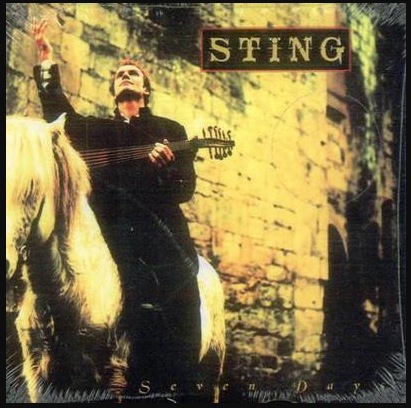
While Sting will forever be associated with the 80s rock band The Police, he had quite a successful solo career after the band parted ways. Ten Summoner’s Songs was his fourth solo studio album, released in 1993.
Sting was a very creative musician. He experimented with different time signatures during his career, with songs like I Hung My Head using a 9/8 time signature and I Was Brought to my Senses featuring a 7/4 metre.
However, we’ve included Seven Days because this unique and otherworldly track uses the 5/4 meter. The inspiration for the song was the idea of combining big commercial, Broadway-style chord progression with a reggae beat. It was the first time that a Sting song used 5/4 timing.
The drummer Vinnie Colaiuta’s playing on the record is masterful. While the song’s musical elements are in 5/4, his drumming features hi-hats that resolve every two bars. This technique makes the rhythm section easier to get a hold of. However, the unstable 5/4 of the rest of the drums renew interest with each passing phrase.
Indeed, while Sting’s lilting vocals and the band’s chord progressions are mesmerising, Colaiuta’s performance stands out. While 5/4 is a troubling rhythm to feel, Colaiuta adds a lot of subtlety and nuance to his playing.
As mentioned earlier, he throws a 4/4 hi-hat pattern on top of the 5/4 beat. Additionally, his splashy ride drum fills going into the chorus are some of the best on record and show a musician at the top of his game.
Adding this common time hat pattern might be one of the reasons why such an odd song had decent chat success. Post-Police Sting certainly had a less commercially-focused attitude to his singles, leading to the release of some very unusual songs that you might not typically hear on mainstream radio.
Seven Days is undoubtedly one of those types of tracks.
#7. Four Sticks – Led Zeppelin

Led Zeppelin was formed in 1968 in London. While their style drew from folk and blues music, they became the forefathers of heavy metal and hard rock.
Led Zeppelin IV was released in 1971. It contains the track Four Sticks but is best known for tracks like Black Dog, Rock and Roll, and Stairway to Heaven.
Most of Zeppelin’s tracks were focused on twelve-bar blues. However, they also took inspiration from the Celtic and American folk revival scenes. Jimmy Page is widely considered one of the best guitarists of all time, and his distinctive crunchy sounds and rhythms can be found on Four Sticks driving, incessant 5/4 meter.
Led Zeppelin’s Four Sticks is an excellent example of a 5/4 guitar line. The pounding riff appears across the track, with John Bonham’s hypnotic, grooving beat adding to the sense of dislocation. However, what’s notable about the song is that it shifts in 6/8 at some points before returning to the 5/4 riff.
Interestingly, the track was so complex that Zeppelin only tried to play it live a handful of times. John Paul Jones said that during the song’s recording, his formal musical training allowed him to play and experiment with different time signatures. However, adapting to these measures wasn’t easy for the band’s drummer.
The song is called Four Sticks because Bonham held an extra set of drumsticks as he played because he wanted to experiment with his style — largely borne from his frustration at being unable to get the take right. The mic picked up these additional sticks clattering around, giving the drums a distinctive, almost South American feeling.
Four Sticks appears on side two of Led Zeppelin’s untitled album. The album features some of the band’s best tracks and is easily their most popular release. However, this high concentration of killer songs means Four Sticks is often underappreciated.
While you might not be able to find too many live performances of the song, there is a re-recording with the Bombay Orchestra in India. Recorded with Robert Plant and Jimmy Page, the unusual exotic feel of the track works well.
The track exemplifies the band’s creativity and desire to try bold new musical directions. With an incredible vocalist and three of the most celebrated and technical musicians of all time working together, they were no strangers to irregular time signatures.
Black Dog, one of their most famous tracks, blitzes through different signatures, including 3/4, 4/4, and 5/4. The barnstorming track Kashmir, off Physical Graffiti, mixes 4/4 drums with a 3/4 rhythm and lead section. The effect is pretty incredible.
Ace Guitar Academy
Speaking of legendary British rock acts, why not take a guitar course with Skunk Anansie’s guitarist, Ace?
The Ace Guitar Academy course focuses on learning electric guitar over six modules. It covers a lot, from musical theory to posture, tuning, chords, and more.
This popular course is excellent for foundational-level players. It will help you on your journey from beginner to intermediate player. The course covers all the skills you need to become a well-rounded guitarist.
Learning to play the guitar takes some commitment. People pick it up at different speeds. But you can’t get anywhere without dedication and practice. Thanks to the on-demand format, this course is a perfect way to learn at your own pace.
The Ace Academy Course features songs in various rock styles, like Indie, Metal, and Punk. It’s perfect for electric guitar players with a preference for these styles.
#8. White Room – Cream
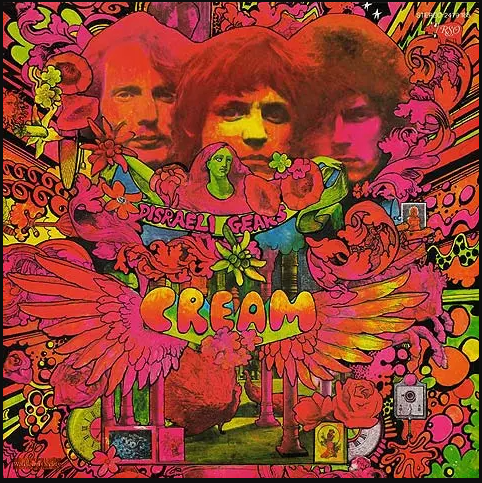
The opening riff of Cream’s iconic track white room is backed by a rolling 5/4 drumbeat before the song shifts into a more conventional 4/4. However, this is an excellent track to study if you want to think about how you can mix 5/4 with other time signatures in your compositions.
The band’s lead guitar player Eric Clapton is an incredible player. He is known for his fantastic work, like his guitar solo on Layla, and his raucous playing on tracks like Sunshine of Your Love or Presence of the Lord on the Blind Faith album from the late 60s.
However, his playing over the 5/4 opening of White Room is restrained. It’s not your typical Clapton guitar riff, even if it has a sound you would associate with his work.
White Room was written by Cream’s bassist Jack Bruce and the poet Pete Brown. While it was a 4/4 composition at first, the drummer Ginger Baker changed the opening and bridge to add a 5/4 feel. Later, his triplet drums around the bridge would further elevate the song.
While the track features substantial contributions from the entire band, it is perhaps most notable for Clapton’s Vox Clyde McCoy Picture Wah in the bridge and solo. This wah-wah effect adds an extra musical element to the track.
Indeed, White Room is a good example of Clapton’s excellent playing. Past the song’s mid-point, Clapton is just wailing along to Jack Bruce’s vocals. Then, once a breakdown occurs, he absolutely shreds the extended solo. Lots of pitch bends, blues licks, and more wah-wah give this track a memorable outro.
Blue Guitar Styles course
The Blues Guitar Styles course by ICMP Elevate is perfect if you’re a fan of Eric Clapton. Expert guitarist Justin Sandercoe hosts the course, which guides you through the history of blues and teaches you tips and tricks from players like Clapton, Muddy Waters, and BB King.
You can learn various blues styles throughout six modules, such as Memphis and Chicago Blues. Moreover, The Blues Guitar Styles course is on-demand, so you can learn at your own pace.
With lifetime access, downloadable lessons, and a certificate of completion, the Blues Guitar style course is accessible and immersive. But most importantly, it will improve your playing significantly and give you the skills to sound like a true Blues guitarist.
#9. Living in the Past – Jethro Tull

Living in the Past by Jethro Tull is another classic 5/4 anthem. Written by frontman Ian Anderson during a visit to America, the track was a big chart success despite its unusual rhythm.
The confusing thing about Living in the Past is that it doesn’t fully feel like a piece of 5/4 music. While it’s evident that the bass line at the start of the track is in 5/4, the syncopated beat gives a different impression. Still, tap along to the bass notes throughout the track, and you’ll keep the quintuple feel going.
According to Anderson, he wrote the song in just 60 minutes while on tour in America. Sitting in a Boston hotel overlooking the Charles River, the band’s manager asked him to write a catchy, radio-friendly hit to help capitalise on the band’s momentum.
Anderson didn’t have the same lust for mainstream success as his manager. So, he mischievously decided to write the track in a 5/4 time signature because it would be challenging to dance to. Secondly, he gave the song the title Living in the Past because he thought kids would find it completely uncool.
However, his manager liked the track, and they recorded it while in the US. Despite having an atypical and janky feel, it was a top 10 single in the UK and eventually in the US.
Another great anecdote related to Living in the Past is when the band performed their hit single on Top of the Pops. Anderson and the others didn’t want to be there because they didn’t consider themselves pop stars.
Sir Cliff Richard was also there warming up on the other stage. As Jethro Tull played, Richard kindly supported them by bopping along to the track. However, he soon realised it wasn’t that kind of track because of the disguised 5/4 rhythm. Anderson remembers it fondly because of Richard’s failed attempt to dance to the song.
#10. Mars, the Bringer of War – Gustav Holst
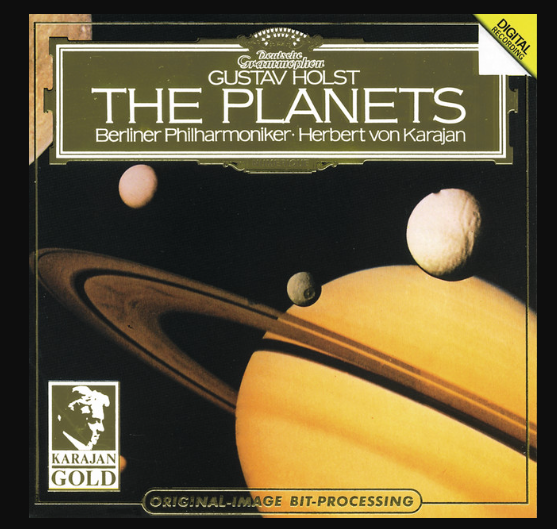
Even if you don’t know its name, you’ll have certainly heard this track from the first movement of Gustav Holst’s The Planets in various film and music projects.
The track debuted at Kings Hall, London, in September 1918. Because Holst wrote The Planets between 1914 and 1917, many have speculated that Mars, the Bringer of War, was a comment on the horrors of the first mechanised war, World War I (1914-1918). However, Holst scholars suggest it was written at the start of 1914 before the war commenced.
Instead, it’s more likely that the song refers to Mars, the ancient Roman God of War. That said, the 5/4 ostinato that drives the track has a marching feeling, and when combined with the dissonant and uneasy feeling, it creates something genuinely frightening.
Additionally, the song asks the violin players to use the col legno or on the wood technique. This method means tapping with the wooden part of the bow, not the strings. It adds to the unnerving feeling of the track.
The song is thought by some experts to represent the force of change. The 5/4 beat offers an irregular and persistent driving force. The relentless rhythm starts quietly and gradually grows throughout the piece. Soon a low brass and woodwind melody emerges, and the entire orchestra plays it.
The climax of the song is meant to be loud and terrifying. The tenor tuba and trumpets at the end are particularly strong. Overall, it’s a wild piece of music with a driving 5/4 rhythm that represents this weird and wonderful time signature power.BONUS TRACK: 5/4 – Gorillaz

The Damon Albarn supergroup Gorillaz didn’t exactly try to hide the fact that this song uses 5/4. However, what is interesting about this piece is that the guitar riff is 5/4, while the beat is in standard time signature (4/4).
Now, we’ve included this as a bonus track and not a top ten track because there is an argument to suggest that the song itself is not really in 5/4 if we accept that the beat decides the meter of the piece.
The opening bluesy guitar riff is undoubtedly in 5/4. The chord progression uses five 8th notes. Again, the opening few bars of the track are an excellent way to get a sense of 5/4 by counting along to the riff.
When the drums arrive, they are relatively straightforward four to the floor. The clashing rhythms make the track unique as both meters swirl around each other. The beat is louder and more prominent, but the 5/4 provides considerable interest and unpredictability that would not be there otherwise.
What’s helpful about this example is that it’s an excellent introduction to polymetre. A polymetre is when two separate sequences with the same subdivision are played at the same tempo. As their respective notes play, they cycle around each other, sometimes connecting and drifting apart.
It’s an excellent effect and shows what you can do by laying two rhythms against each other, like in 5/4 or the example of Sting’s Seven Days we gave above.
FAQS on 5/4 and 5/8
What popular songs are in 5/4?
Aside from the tracks we listed above, plenty of other popular songs use the 5/4 time signature.
Some other tracks you might know that fully or partly use this unusual metre are:
- Kid Gloves by Rush
- Snarky Puppy by Lingus
- When Your Mind’s Made Up by Glen Hansard
- My Wave by Soundgarden
- Animals by Muse
- Halloween Theme by John Carter
- The Grudge by Tool
- Last Exit by Pearl Jam
What Taylor Swift song is in 5/4?
While we already mentioned Closure, it’s not the only Taylor Swift song with a 5/4 beat. The track “tolerate it” also uses 5/4 timing, or perhaps 10/8 timing, depending on how you play it.
What is a quarter note?
A quarter note represents one beat of a four-bar phrase.
Can the bottom number of a time signature be any number?
No. The bottom number will either be a 2, 4, or 8.
What is a “C” time signature?
In music notation, “C” stands for common. Therefore, the “C” time signature is 4/4.
Final thoughts
When you’re learning guitar or any other instrument, it can help to get a grounding in music theory, including how to understand time signatures. While many players prefer to feel rather than study music, it’s a worthwhile endeavour because it allows you to understand and appreciate what your favourite artists are doing.
5/4 is a good time signature to learn. While it’s not as intuitive and natural as 4/4 or even 3/4, once you master 5/4, you can take on the other less typical metres.
While music is fun to play, it can be even more rewarding when you learn how it all works. If you’re a total beginner, learning about music can seem intimidating. Getting good requires a lot of practice, and finding time to travel to a school or location to learn can be hard. Additionally, lessons can be expensive.
The ICMP Elevate Guitar courses solve these issues. Our in-demand lessons allow you to learn at your own pace without breaking the bank. With lessons from excellent teachers, we can help you go from an absolute beginner to an absolute boss. Our courses are suitable for intermediate players, too, because they are so thorough and packed with valuable tips, tricks, and theory.
So check out our guitar courses today to find something that suits your musical preferences. There is something there for every guitar player, whether you like jazz, blues, or rock. Additionally, as mentioned above, our Ace Guitar Academy course is your chance to learn from rock legend Ace from Skunk Anansie.
If you’d like to take your playing to the next level, get in touch today and buy one of our immersive courses.
From the blog

Rockstars in Training: The Best Kids’ Electric Guitars for 2024

Redefining Your Riffs: How Electric Guitar Strings Shape Your Sound


